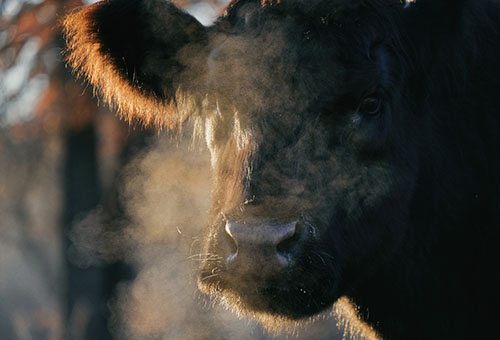Winter Body Condition Scoring Guide
Jan 29, 2024

A crucial aspect of winter management is body condition scoring (BCS), a systematic approach to evaluating the physical condition of livestock. In this blog, we’ll delve into the importance of BCS during the winter months and provide a comprehensive guide for livestock owners.
Understanding BCS
Body condition scoring is a valuable tool for assessing the nutritional status of livestock by visually and physically evaluating their body fat and muscle composition. The scoring system typically ranges from 1 to 5 or 1 to 9, with higher scores indicating better body condition. Maintaining an optimal body condition is essential for reproductive success, overall health, and resistance to harsh winter conditions.
Why BCS matters in the winter
Winter BCS guide
BCS is a valuable management tool that empowers livestock owners to make informed decisions regarding nutrition and health during the winter months. By integrating BCS assessments into their winter management plans, producers can optimize the well-being of their animals, enhance reproductive success, and build resilience against the challenges posed by cold weather.
You can trust Co-op for all your winter livestock management needs. From feed to handling equipment to animal health products and more, we’ve got you covered! Find the nearest location here.
For more content like this, check out the latest issue of The Cooperator.
Understanding BCS
Body condition scoring is a valuable tool for assessing the nutritional status of livestock by visually and physically evaluating their body fat and muscle composition. The scoring system typically ranges from 1 to 5 or 1 to 9, with higher scores indicating better body condition. Maintaining an optimal body condition is essential for reproductive success, overall health, and resistance to harsh winter conditions.
Why BCS matters in the winter
- Nutritional adequacy:
- Winter demands more energy to combat cold stress.
- BCS helps to ensure that livestock receive sufficient nutrients to maintain weight and health.
- Reproductive performance:
- Adequate body condition is crucial for successful breeding and fertility.
- BCS assessments aid in planning for calving or lambing during winter months.
- Health monitoring:
- Livestock in good body condition are more resilient to diseases and weather-related stresses.
- Early detection of weight loss or health issues through BCS can prompt timely intervention.
Winter BCS guide
- Visual assessment — When visually assessing the animal, consider factors such as muscle tone, fat cover, and skeletal features. Pay close attention to key areas like the neck, ribs, and tailhead for signs of fat or muscle loss.
- Physical assessment — Perform a hands-on assessment by palpating key areas such as the backbone, ribs, and tailhead. Evaluate muscle tone and fat cover and check for the presence of any lumps or abnormalities.
- Scoring system — Familiarize yourself with the specific BCS scale used (1-5 or 1-9) and the corresponding descriptors for each score. Regularly record scores for individual animals to track changes over time.
- Winter diet — Utilize BCS information to tailor winter feeding strategies. Increase or adjust feed quantities based on the observed body condition, ensuring that animals receive adequate energy intake.
- Monitoring trends — Conduct BCS assessments regularly throughout winter to monitor trends in livestock condition. Identify and address issues promptly to prevent prolonged nutritional deficiencies.
BCS is a valuable management tool that empowers livestock owners to make informed decisions regarding nutrition and health during the winter months. By integrating BCS assessments into their winter management plans, producers can optimize the well-being of their animals, enhance reproductive success, and build resilience against the challenges posed by cold weather.
You can trust Co-op for all your winter livestock management needs. From feed to handling equipment to animal health products and more, we’ve got you covered! Find the nearest location here.
For more content like this, check out the latest issue of The Cooperator.